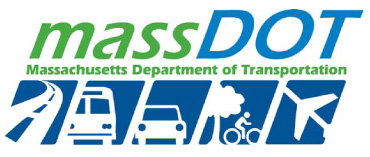
The Massachusetts Department of Transportation (MassDOT) Board acted Monday to move ahead with plans to completely demolish Interstate 90 toll plazas by the end of 2017 as a milestone in the state’s progress toward All Electronic Tolling (AET) along Interstate 90 (the Massachusetts Turnpike), the Tobin Bridge, and Boston tunnels, the DOT announced.
At today’s Board meeting, MassDOT announced that AET will “go live” on October 28. The Board approved toll demolition contracts, reviewed data security and retention proposals and instructed MassDOT to proceed with public hearings on proposed toll rates designed to be revenue neutral and minimize changes in toll charges for current commuters.
“The AET system will improve driver convenience and safety and reduce greenhouse gas-causing vehicle emissions,” said MassDOT Highway Administrator Thomas J. Tinlin. “When toll booths have been removed, AET will allow drivers to maintain regular highway speed as they pass under AET gantries, eliminating the need for drivers to sharply reduce speed and idle in toll booth lines.”
The Board-approved contracts provide that tolls booths will begin to be demolished as soon as AET goes live and all work to remove toll plazas and reconstruct roadways is to be completed by the end of 2017. Toll plaza removal and reconstruction, excluding the Sumner Tunnel, will cost about $133 million.
While the decision on gantry locations was based on a 2012 study and the decision to implement AET was made in 2014, MassDOT officials have been working with the predetermined gantry locations to make sure rates at the new gantries remain “revenue neutral,” meaning that total revenue generated both on the Western Turnpike (I-90 from the New York border to Weston) and the Metropolitan Highway System will be approximately the same as with current tolls.
Proposed rates will extend discounts for users of Commonwealth of Massachusetts-issued E-ZPass transponders, currently available only at the Weston and Allston/Brighton tolls, to every gantry location including the Tobin Bridge and airport tunnels. The rates being proposed for public review provide that the cost of driving from one end of I-90 to the other for E-ZPassMA users will drop from the current rate of $6.60 to $6.15.
“In developing proposed AET rates and policies, we worked with the gantries’ predetermined locations and considered a series of plans and models to develop a revenue neutral toll strategy in an effort to keep changes in the cost of specific commuting trips modest, within five or ten cents of current rates,” said Massachusetts Transportation Secretary and CEO Stephanie Pollack. “We look forward to the public’s input on toll charges before the Board votes to finalize rates on October 6.”
Point-to-point tolls may change because of the location of gantries selected by the previous Administration and because there will be 16 gantries with the AET system compared with 26 toll plaza locations now. Under the proposed gantry toll rates presented today, just over half of all drivers would see their tolls either decrease or remain the same and another 20 percent of drivers would see an increase of five or ten cents per trip.
Under proposed rates, higher increases would occur on trips that are currently un-tolled, for example, for travel in tunnels headed to the airport or for those drivers in the Newton area where a toll had been removed. The proposed gantry rates will be the subject of seven public hearings and a public comment period beginning after Labor Day.
“State law ensures that tolls paid on the western and eastern sections of the Turnpike are dedicated to the maintenance of the respective sections, so we needed to suggest proposed rates that produced the same revenue currently generated in both areas. To achieve this goal, given the predetermined location of the gantries, it was not possible to set a toll schedule that kept things exactly the way they are today,” said Administrator Tinlin. “But I am pleased that this proposal either reduces costs, makes no change or modest change, and reduces the cost of many trips for Massachusetts E-ZPass users. A key benefit of AET for all drivers is how the new system will significantly reduce congestion and crashes at the typical chokepoints.”
The Board was also briefed today about existing and proposed policies to restrict the usage and retention of data collected by gantries. Current law requires subpoenas for authorities to access driver data, mirroring the existing policies for the Massachusetts E-ZPass system. MassDOT is working with the Executive Office of Public Safety to establish clear policies for the use and retention of AET data. MassDOT is in discussions with public safety officials about the very limited circumstances in which AET-generated “Hot List” or other information could be used in the case of public safety emergencies.
MassDOT officials estimate that the agency will save about $5 million in annual operating costs with AET. The cost of designing and building the physical AET system is about $130 million and toll plaza removal and reconstruction, excluding the Sumner Tunnel, will cost about $133 million.